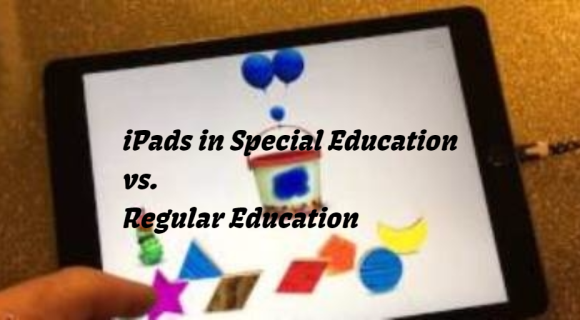Is There a Difference?
I have traveled across the nation sharing ideas on how to use the iPad to strengthen learning for students with special needs. Undoubtedly, participants always ask, “What apps do you suggest to teach reading (or math)?” This generally leads to their next question, “How do you use iPads in special education?”
The iPad and iOS offer many great learning tools and accessibility features to help level the playing field for learners with special needs. For example, there are plenty of excellent resources available for learners who are visually or hearing impaired, including the ability to zoom, invert colors, and use voice-over features. Face Time can be utilized for learners who use sign language, and the iPad is compatible with braille displays for the blind. The camera feature also allows for photos or recordings of common sign language sequences for those working with learners who are hearing impaired.
Assistive touch and iOS’s compatibility with switches and assistive tech are also terrific for learners with motor difficulties. The iPad can even serve as an augmentative and alternative communication device for non-verbal learners. The ‘speak selection’ and ‘define’ features are great for struggling readers or for those who may have dyslexia. Word prediction and dictation are awesome if writing’s a weakness.
More generic needs can be addressed through tools such as the calendar and reminders, which promote organizational skills. The ‘Safari Reader’ feature and guided access help learners stay focused on the task at hand. Directions and sample problems can be recorded, as can therapy sessions or helpful strategies for consistency at home. There’s an entire category of apps in iTunes labeled “special education,’ and these apps focus on the areas of communication, emotional development, sensory and visual perception, seeing and hearing, language development, and life skills.
Many think that the iPad is the answer to helping struggling learners bridge the gap between their current level of achievement and the desired grade level expectations. However, during a recent class discussion where I posed the question, “How do you use iPads differently in special education versus regular education?” we pondered the true differences and asked, “Should there be a difference?” The key to shrinking the achievement gap is explicitly targeted instruction – not a device. While the iPad allows teachers to differentiate and customize instructional materials, is shouldn’t take the place of a good teacher and skilled teaching. There is no magic app (nor is the iPad a magic device), and that’s why I encourage teachers to change their thinking from asking, “How can the iPad teach this content?” to “How can the iPad help my students learn this content?”
When I share app suggestions, I encourage participants not to limit themselves to the ones marked “special education.” Special education at its core is just great teaching and strategies. Furthermore, don’t get caught up in searching for that one magic app for math or reading. There are several great apps out there, but my advice is to clean house and focus on those few really great apps that can be used in a variety of ways, for both consumers and producers. Look at what your learners are already familiar with and rethink the use of the app.
My favorite apps to use in special ed are the screencasting apps. Not only does screencasting provide students with an alternate means to demonstrate what they have learned, it also promotes learner independence and facilitates teacher efficiency. Screencasting promotes content sharing, lesson monitoring, and student self-pacing. Another great benefit is the continuation of the home and school relationship not only through the ability to highlight examples of student work, but also by modeling and sharing expectations, common language, strategies and procedures. Additionally, through screencasts, teachers are able to show families how learners have grown over time with many apps featuring an electronic portfolio element that connects students’ creations to their teacher or class.
While there are tons of apps available, over 1.5 million as of September 2015, we must be selective in our choices so that we can remain efficient in our teaching with learners who are already short on time. Substituting the iPad for flashcards or a paper/pencil task is not the goal. Challenging learners to apply higher level thinking skills and develop skills that support learning, personal productivity, decision making, and daily life is the ultimate goal for all learners, regardless of their status as special or regular ed.
Dr. Jennifer Leese currently serves as a leader in the Central York School District in York, Pennsylvania as a supervisor of special education. She also instructs the popular Eduspire course, “iPads in Education.”

